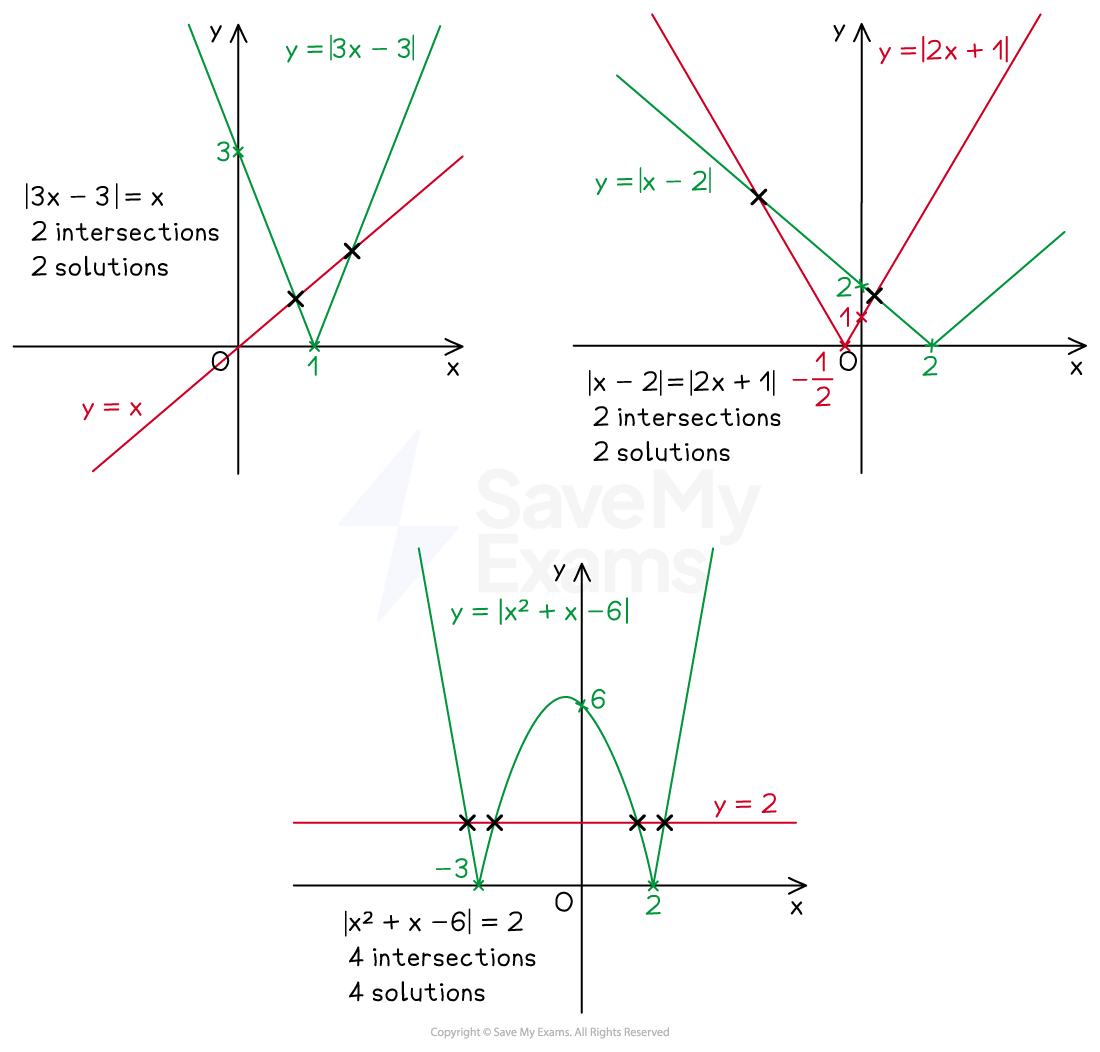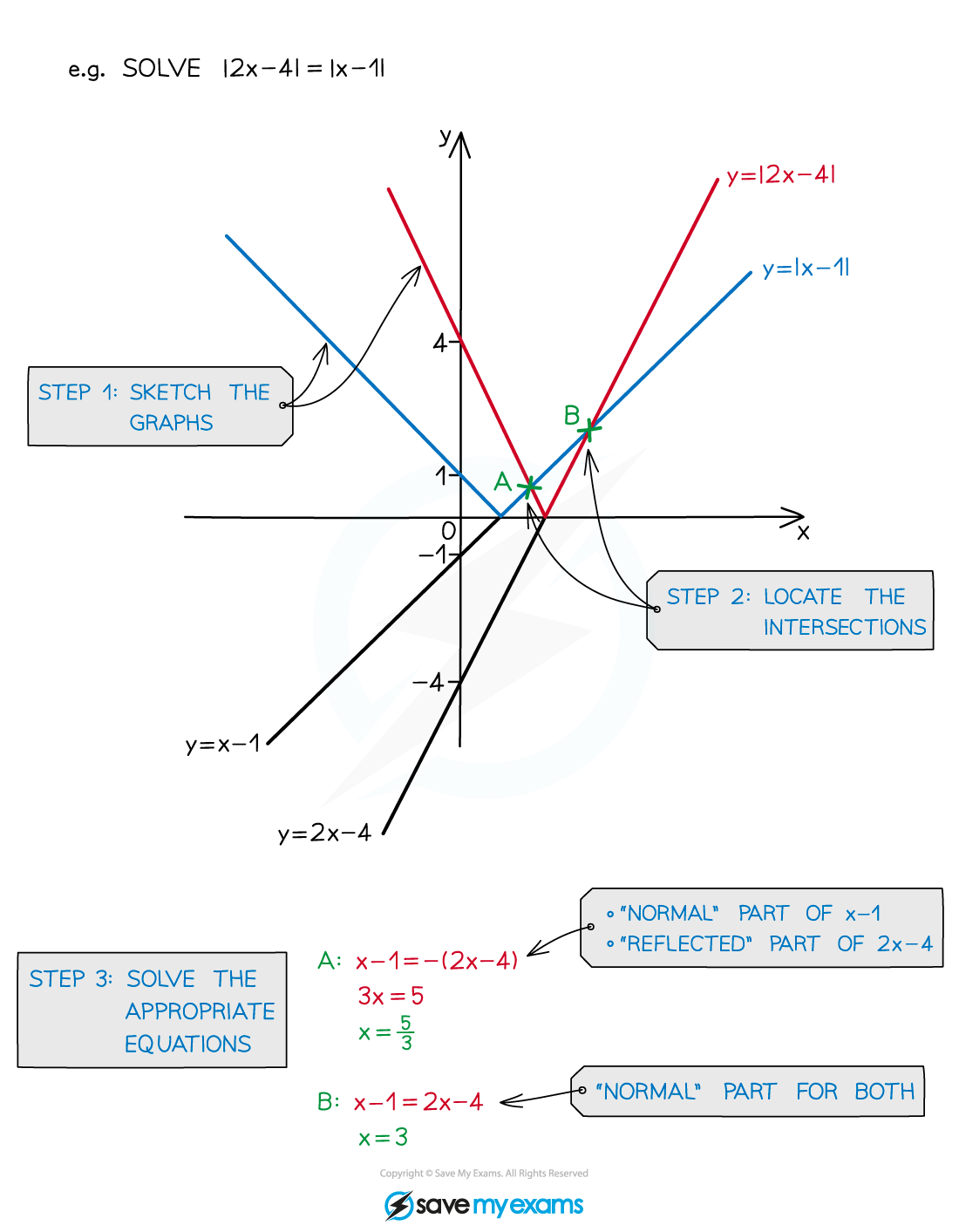Modulus Equations & Inequalities (DP IB Analysis & Approaches (AA)): Revision Note
Modulus equations
How do I solve modulus equations graphically?
To solve
(or
) graphically
Draw
and
(or
) into your GDC
Find the
-coordinates of the points of intersection

How do I solve modulus equations using algebra?
To solve either
or
using algebra, the process is the same:
split into two equations
Solve both equations
Check that the solutions work in the original equation
e.g.
splits into
and
the first equation gives
but
is not a solution to
as
and
the second equation gives
which does satisfy
so is the solution
A sketch can help, even when solving algebraically

Worked Example
Solve
(a)

(b) .

Modulus inequalities
How do I solve modulus inequalities?
To solve modulus inequalities
first solve the modulus equation
by replacing the inequality sign with =
then use a graphical method to find the intervals of
that satisfy the inequality
To solve
,
,
or
where
is graph 1
is graph 2
STEP 1
Sketchand
STEP 2
Locate the-coordinates of the points of intersection
these would be
-axis intercepts if
STEP 3
Determine which part(s) of the graph(s) satisfy the inequalityor
are where graph 1 is below than graph 2
or
are where graph 1 is above than graph 2
STEP 4
Write the range of values offor these regions
using strict inequalities if
or
or 'equal to' inequalities if
or
An alternative method is to use a sign table
e.g. where you substitute a numerical value from each of the possible intervals of
into the original inequality
The solutions are the regions for which the original inequality is true

Worked Example
Solve the following inequalities.
(a)

(b)


Unlock more, it's free!
Did this page help you?